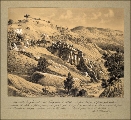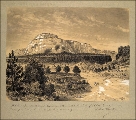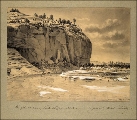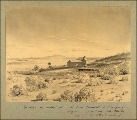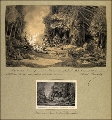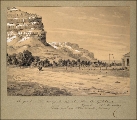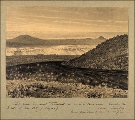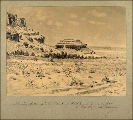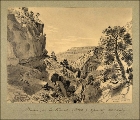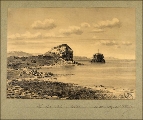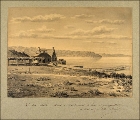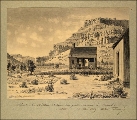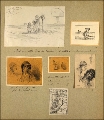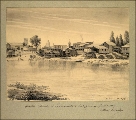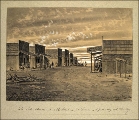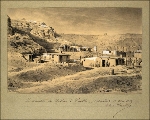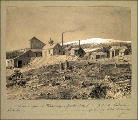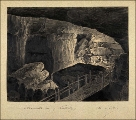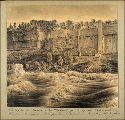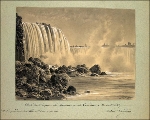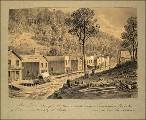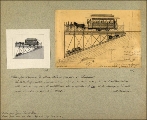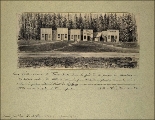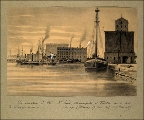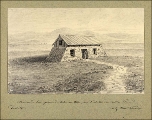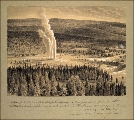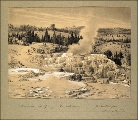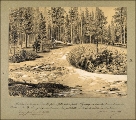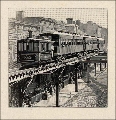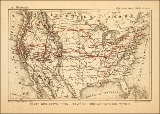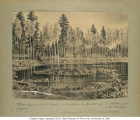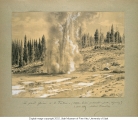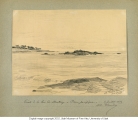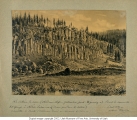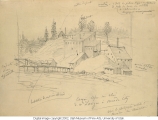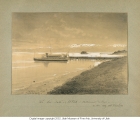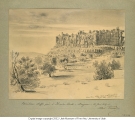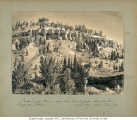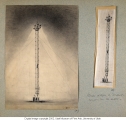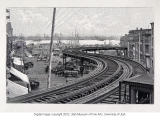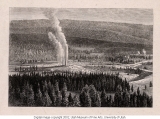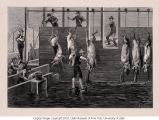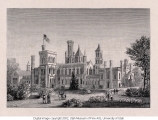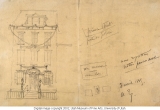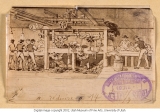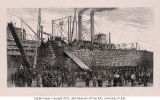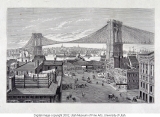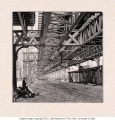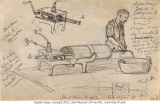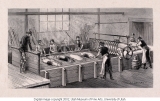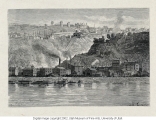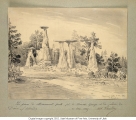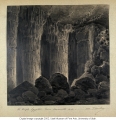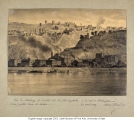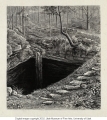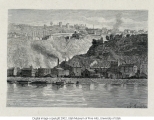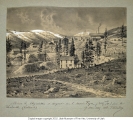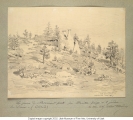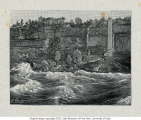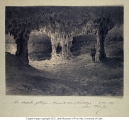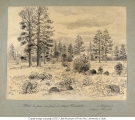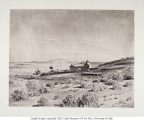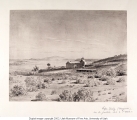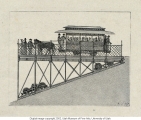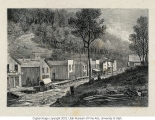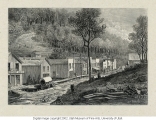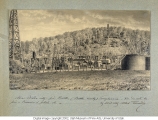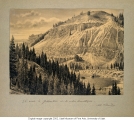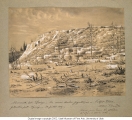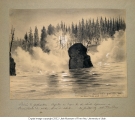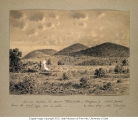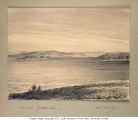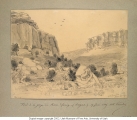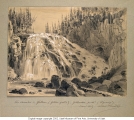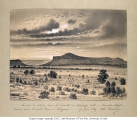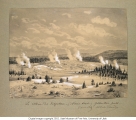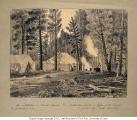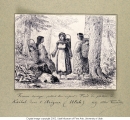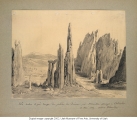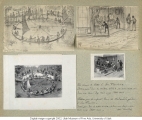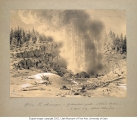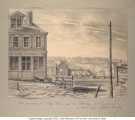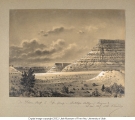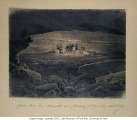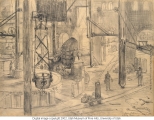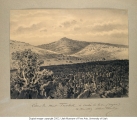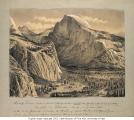| Identifier |
1978_346_HouseOfWood.jpg |
| Title |
House with Sloping Exterior Walls of Dirt for Protection from the Wind of the Dakota Plains, Knife River, North Dakota |
| Alternate Title |
Maison de bois garnie de talus en terre pour l'abriter du vent - Plaines du Dakota |
| Artist's Notation |
Knife River Dakota |
| Creator |
Tissandier, Albert 1839-1906 |
| Subject |
Houses--North Dakota--Knife River--1880-1890; Plains--North Dakota--Knife River--1880-1890 |
| Subject LCSH |
Windbreaks, shelterbelts, etc.--North Dakota--Knife River. |
| Description |
Associated text from Albert Tissandier's book Six mois aux États-Unis : voyage d'un touriste dans l'Amérique du nord suivi d'une excursion à Panama (Paris : G. Masson, [1886]), p. 191: "Ce nom de mauvaises terres donné autrefois par les premiers Français qui ont exploré le pays ne leur a été donné que parce que le voyage y était difficile, fort pénible même, mais il ne veut pas dire que tout y est inculte. Nous passons au contraire dans de grandes régions de prairies nues et assez désolées d'aspect, il est vrai; néanmoins des troupeaux peuvent y vivre. L'absence absolue des arbres y rend la vie dure et difficile. Le vent n'est arrêté nulle part et dessèche souvent tout sur son passage. La compagnie du chemin de fer cherche à encourager les habitants ou les fermiers de ces contrées à faire mettre des arbres. Elle a fait faire elle-même, pour donner l'exemple, des plantations importantes. On en voit déjà les effets à Tappan où plus de deux cent mille arbres et boutures ont été plantés, ainsi qu'à Steele. Dans quelques années, il faut espérer que tous ces efforts seront récompensés et que les jeunes arbres seront assez développés pour former une barrière capable de briser la force du vent. Les habitations que l'on voit dans ces tristes campagnes ont un caractère particulier. Construites en bois, elles seraient certainement renversées ou ruinées par les ouragans, aussi sont-elles entourées complètement par des talus de terre. Des embrasures y sont pratiquées pour donner du jour aux fenêtres, et pour donner accès à la porte d'entrée. Les habitants sèment du gazon sur ces sortes de barricades qui protègent leurs maisons et des fleurs en été pour les rendre plus gracieuses d'aspect." |
| Published Location |
Reproduced in the exhibition catalog, Albert Tissandier : Drawings of nature and industry in the United States, 1885, by Mary F. Francey ([Salt Lake City, UT] : Utah Museum of Fine Arts, 2001), p. 55. |
| Short Essay |
The desolate land of the Dakota territories was, for Tissandier, a stark contrast to the bustling cities of the East. Life in the Dakotas was both rustic and lonely. Communities were small, but began to grow with the discovery of gold in the Black Hills. Wheat fields, the main agricultural crop, stretched for miles. Describing life in the Dakota territories, Tissandier said: " ... we passed large regions of naked and rather desolate looking prairies, it's true, but nevertheless cattle can live here. The absolute absence of trees makes life difficult. The wind doesn't stop and often dries out everything in its passage." Tissandier's drawing is of a house in the open land of Dakota. The unusual exterior is due to its inner log structure that is surrounded by thick walls of earth. The windows and doorway of the house were exposed by squares that were cut in the covering earth making it possible to enter and exit. This construction was necessary for wood was scarce and strong winds created a need for additional support. Tissandier had never seen houses like this, and wrote in his journal that "The habitations you see in this sad country have a peculiar character. Constructed of wood, they would certainly be overturned by the hurricanes, so they are completely surrounded by slopes of earth. Embrasures are set in for windows and in order to give access to the doorway. The inhabitants sow grass on these sort of barricades which protect their houses, and the flowers in summer give them a most gracious appearance." His journey took him from New York and Philadelphia into an entirely new landscape, yet Tissandier's interest was still in how architectural and engineering problems were solved. That the people of these territories used the resources immediately available to them in order to create a stable structure elicited his genuine admiration. |
| Publisher |
Utah Museum of Fine Arts |
| Contributors |
Mary F. Francey |
| Date |
1885 |
| Type |
Image |
| Format |
application/pdf |
| Source |
Albert Tissandier: Drawings of Nature and Industry in the United States |
| Language |
fra |
| Rights Management |
Digital image c2001 Utah Museum of Fine Arts, University of Utah |
| Source Physical Dimensions |
31.75 cm High x 41.28 cm Wide |
| Source Characteristics |
Graphite on paper |
| Light Source |
Kaiser Softlite ProVision 6x55W flourescent 5400K daylight |
| Archival Resolution |
TIFF: 5099 x 4060 pixel |
| Display Resolution |
JPEG: 900 x 707 pixel |
| Bit Depth |
36-bit color |
| Scanning Device |
Leica S1 Pro scanning camera; Hasselblad CFi 50mm F/4 lens; f/11 |
| Exhibit Catalog |
ISBN: 0-9657215-0-7; Library of Congress Catalog Number: 2001094211 |
| Setname |
uu_umfa_at |
| ID |
415832 |
| Reference URL |
https://collections.lib.utah.edu/ark:/87278/s6bk1cds/415832 |

